I think we don’t give vultures all the love they deserve. When you consider all the nasty stuff they uncomplainingly dispose of, and what the world might look like if they didn’t, it seems we could be more grateful.
I, however, am a fan of vultures. I have been lucky enough to get close views of two massive Old World Vulture species, the Eurasian Griffon and the Egyptian Vulture. Here in Mexico, I can almost always count on Black Vultures and Turkey Vultures to pad each outing’s list by two species. Occasionally I have been lucky enough to see Lesser Yellow-headed Vultures in tropical Mexico. Alas, although I was once a California boy, I have never seen a California Condor. Back in those days, there were only about three dozen of them to be seen, anywhere. (Thankfully, the current world population is now above 550.)
One of my favorite “vultures”, however, is not really a vulture. More on that in a bit.
As I said, Old World Vultures tend to be very large. The wingspan for Egyptian Vultures can reach 1.7 meters (5.5 feet), even though it is one of the smallest of this group. Eurasian Griffons can clock in with a very impressive 2.3-2.8 m (7.5-9.2 feet) wingspan. What is more, the Griffon can weigh almost ten times the Egyptian Vulture’s weight.
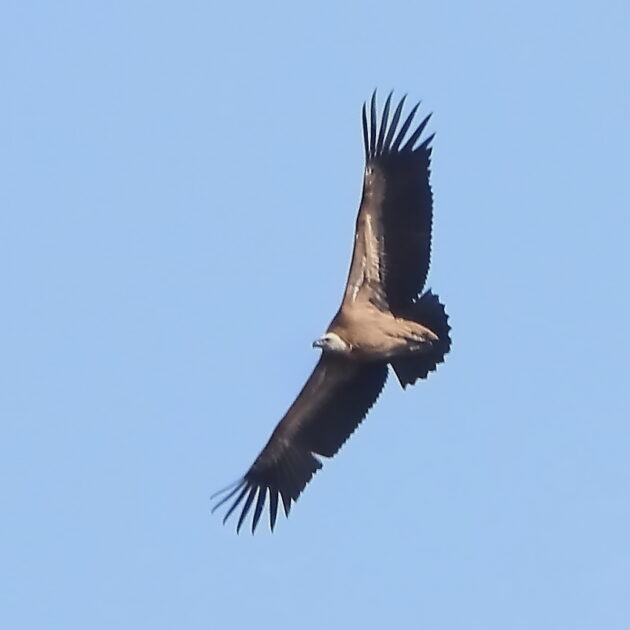
Turkey Vultures have a wingspan and weight similar to that of Egyptian Vultures. Black Vultures are a bit smaller than all these other species.
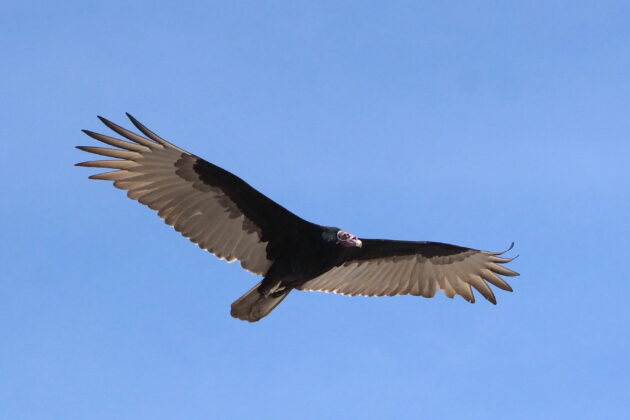
a
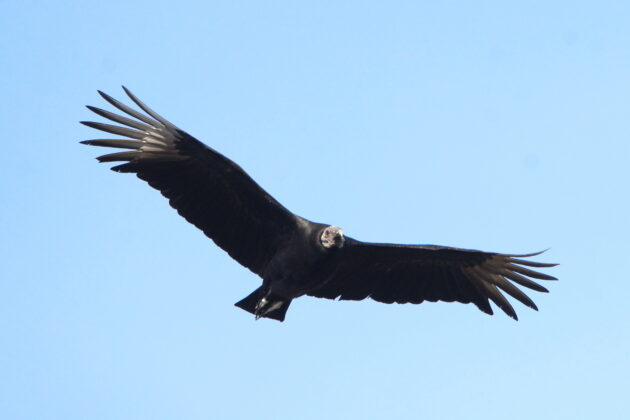
The Lesser Yellow-headed Vulture looks very similar to the Turkey Vulture, but is a bit smaller. The first time I saw one, I assumed it was, indeed, a Turkey Vulture. But as it had flown very close overhead, my photos were good enough to reveal its — wait for it — yellow (and violet) head.
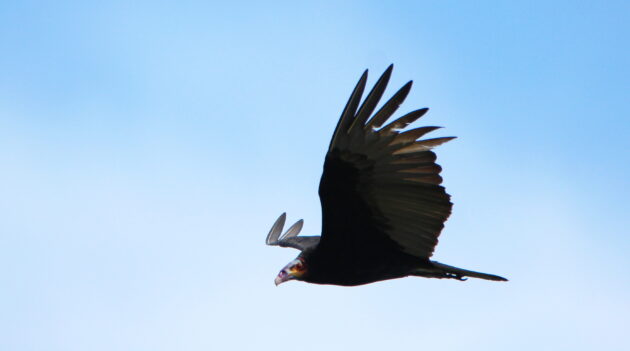
But the Yellow-headed Vulture is not the only species that can easily be mistaken for a Turkey Vulture. Zone-tailed Hawks pass for Turkey Vultures, not because of a close relationship, but for much sneakier reasons. Which I find fascinating.
Vultures, you see, are safe birds for smaller creatures. No need to worry about a vulture, unless you are dead. And technically, you also won’t need to worry when you are dead. So they are very comforting scavengers, overall.
Zone-tailed Hawks, however, are very fond of fresh meat. And how do they get this fresh meat? By pretending to be inoffensive Turkey Vultures. Same dark bodies, silvery flight feathers, and, mostly, silvery tail. They even tend to fly among Turkey Vultures, soaring with their wings held in the same slightly-V-shaped position. Then they drop out of the flock, and pounce. At which point, if you are a small creature, you are dead.
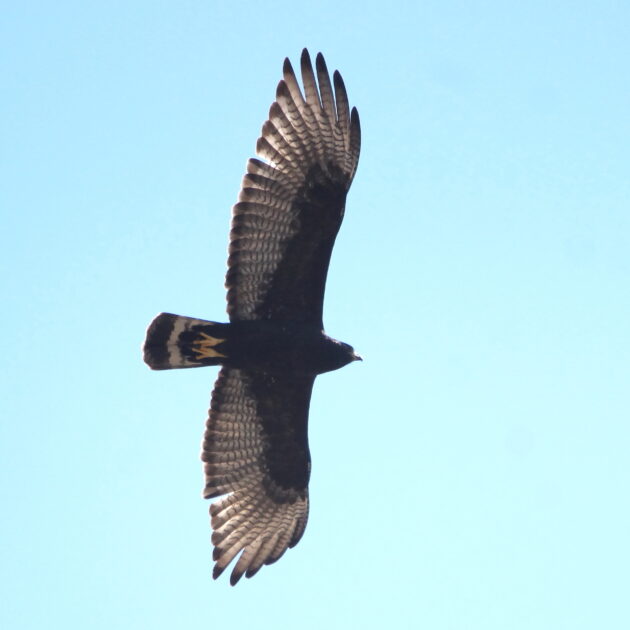
Zone-tailed Hawks breed in the southwestern United States and northern Mexico, but they winter from Mexico to Brazil. I once saw one in summer, two hours north of Morelia, but all my other sightings were at lower elevations, during the winter.
Until recently, I had never seen a Zone-tailed Hawk in Morelia. But two weeks ago, my Cuban ornithologist friend and church member went to check for ducks at the pond near our auditorium, after our Sunday service ended. He had the good sense to pay close attention to a low-gliding vulture overhead… And suddenly, he called me excitedly on the phone. Pablo! A Zone-tailed Hawk! I went running — not a pretty sight, I confess — and the hawk was kind enough to fly directly overhead as I arrived. Hawk-shaped head and bill? Check. Dark tips on the flight feathers? Check. A “zoned” tail? Check!
It was good not to be a small creature, at that moment.
Source link
Facebook
Pinterest
Twitter
LinkedIn

